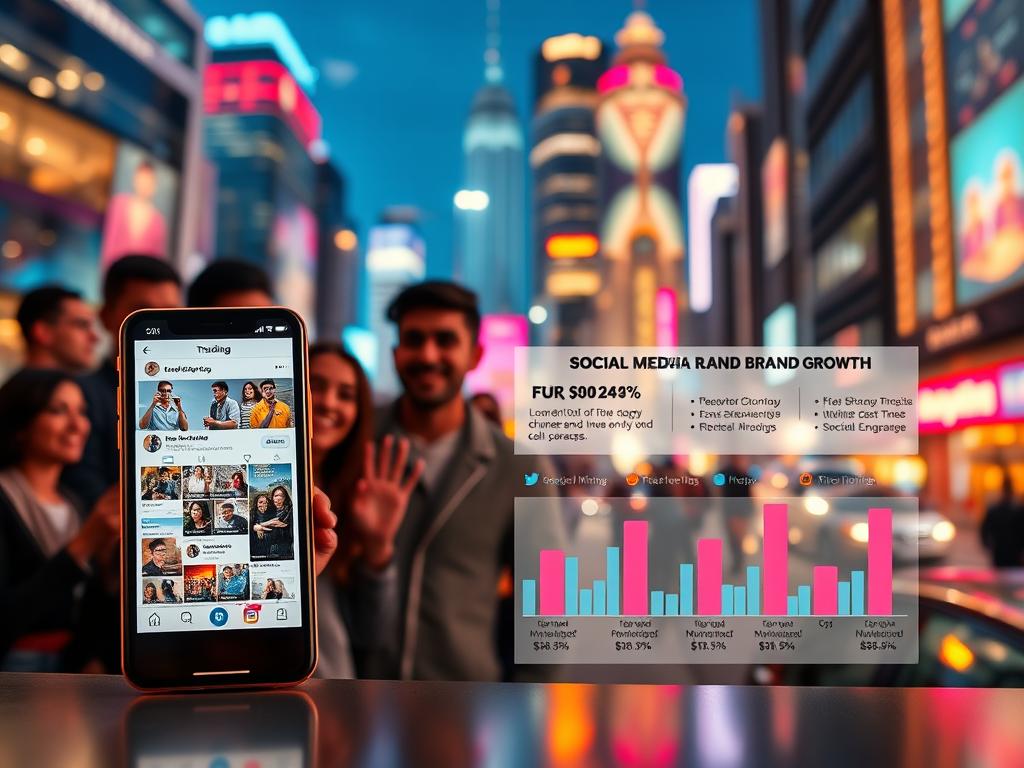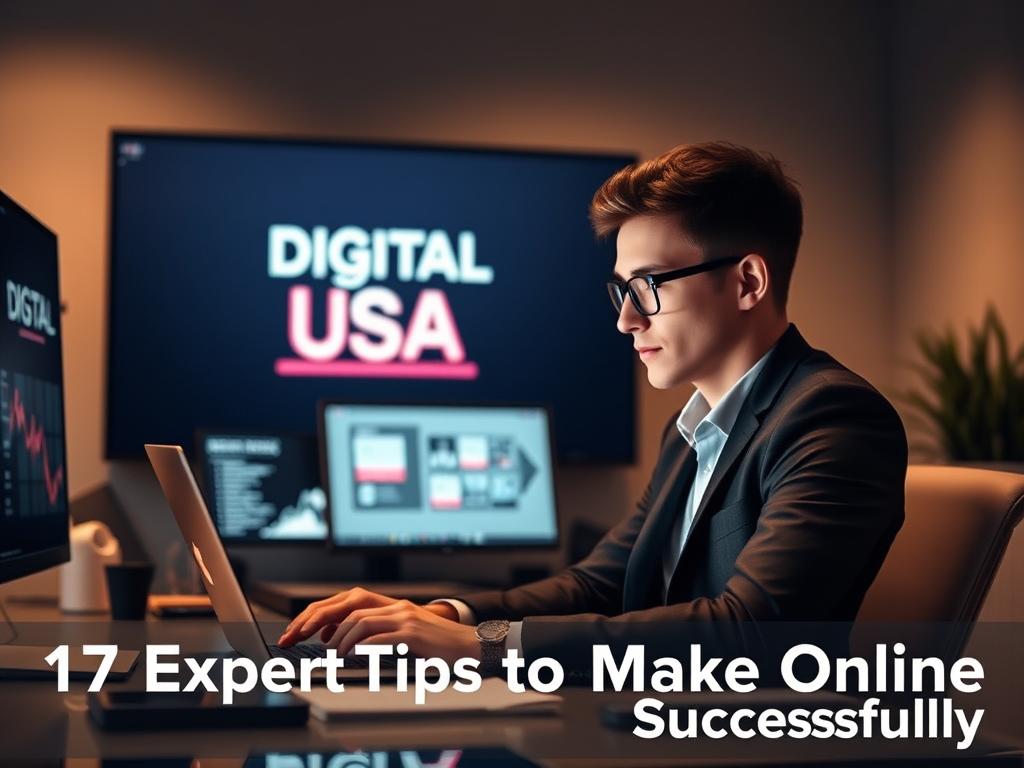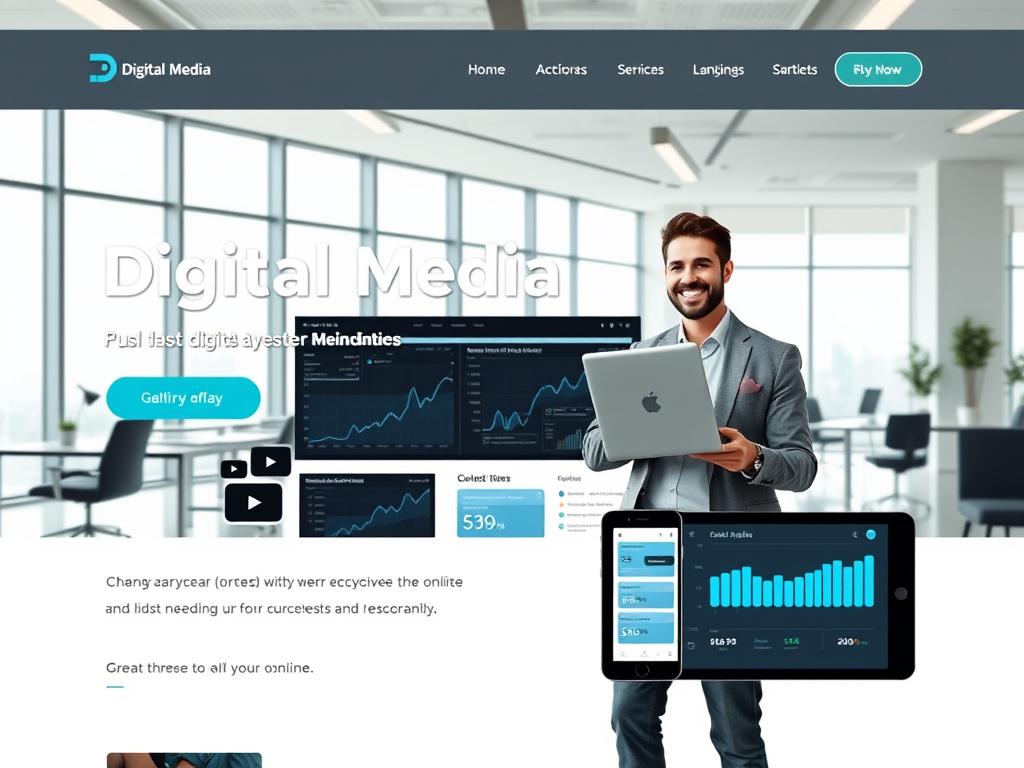When I first started exploring ways to generate income online, I felt overwhelmed. The sheer number of options, from freelancing to selling digital products, made it hard to know where to begin. But with persistence and the right strategies, I discovered that building a sustainable online income is not only possible but also incredibly rewarding.
This article is designed to guide you through the process, offering practical insights and proven methods to help you succeed. Whether you’re looking to monetize your skills, sell handmade goods, or explore affiliate marketing, there’s a path for you. Platforms like Etsy and Upwork have made it easier than ever to connect with customers and grow your income1.
From my own experience, I’ve learned that starting small and staying consistent is key. For example, users of the Mode Earn App have generated $600 or more annually by leveraging their daily habits1. Similarly, online tutoring and virtual assistance have become popular ways to earn flexible income, with platforms like Tutor.com and Flexjobs offering countless opportunities2.
Let’s dive into the details and explore how you can turn your passion into profit. Whether you’re a creative, a tech enthusiast, or someone looking for a side hustle, this guide will provide the tools you need to thrive.
Key Takeaways
- Explore diverse opportunities like freelancing, blogging, and affiliate marketing.
- Platforms like Etsy and Upwork connect you with customers globally.
- Start small and stay consistent to build sustainable income.
- Leverage daily habits to earn through apps like Mode Earn.
- Online tutoring and virtual assistance offer flexible income streams.
Introduction: Embracing the Online Income Journey
The idea of earning income online first sparked my curiosity when I realized the flexibility it offered. I was tired of the traditional 9-to-5 grind and wanted to explore a way to work on my own terms. This journey wasn’t just about financial gain—it was about creating a lifestyle that aligned with my passions and goals.
My Motivation for Starting Online
What inspired me to take the leap was the success stories I read about people turning their hobbies into profitable ventures. I started small, experimenting with freelance writing and selling handmade crafts. At first, I doubted whether I could succeed, but seeing others thrive gave me the confidence to try.
One of my breakthrough moments came when I earned my first $100 through a freelance platform. It wasn’t much, but it proved that earning online was possible. Platforms like Upwork and Etsy made it easy to connect with clients and customers globally3.
Setting a Success Mindset
Building a sustainable online income requires more than just skills—it demands the right mindset. I learned to set realistic expectations and focus on long-term growth rather than quick wins. For example, 75% of companies now offer remote work policies, showing how the world is shifting toward online opportunities3.
Embracing a can-do attitude was crucial. I reminded myself that every small step counts. Whether it was learning a new skill or improving my online presence, consistency was key. This mindset helped me stay motivated even when challenges arose.
Digital tools and platforms played a significant role in my journey. From project management apps to social media, these resources made it easier to launch and grow my projects. With 3.5 million freelancers in the U.S. alone, the online economy is thriving3.
Tips To Make Money Online
Discovering how to generate income online felt like unlocking a new world of possibilities. The key to success lies in identifying a niche that aligns with your skills and audience demands. For example, freelancers specializing in writing can charge $100 per hour or more for their services4. This highlights the importance of choosing a field where your expertise can shine.
Finding Your Niche
To identify a profitable niche, I started by analyzing my strengths and market trends. Platforms like Etsy and Upwork offer insights into what’s in demand. For instance, Etsy reported over 96 million active buyers in 2023, showing the potential for creative entrepreneurs4. By focusing on areas like handmade crafts or digital products, I was able to carve out a space that resonated with my audience.
Balancing Short-Term Wins and Long-Term Goals
While quick wins are motivating, sustainable growth requires a balanced approach. I found that combining short-term strategies, like affiliate marketing, with long-term investments, such as building a social media presence, yielded the best results. For example, Instagram influencers often see payments the month after a campaign concludes, making it a reliable income stream4.
Here’s a breakdown of strategies I used to balance immediate and future gains:
| Strategy | Short-Term Impact | Long-Term Potential |
|---|---|---|
| Affiliate Marketing | Quick commissions | Passive income growth |
| Social Media Engagement | Immediate audience growth | Brand loyalty and partnerships |
| Freelancing | Direct earnings | Client base expansion |
By focusing on both immediate and future opportunities, I was able to build a steady and scalable online income. The key is to stay consistent and adapt as the market evolves.
Exploring Freelance Opportunities
Freelancing opened doors to a world of flexibility and creativity I never thought possible. It allowed me to work on my own schedule, choose projects I was passionate about, and connect with clients globally. Platforms like Upwork and Freelancer.com became my go-to resources for finding opportunities that matched my skills5.
Choosing the right platform was crucial. I started by evaluating my expertise and researching which website catered to my niche. For example, Upwork hosts millions of users across diverse categories, making it ideal for freelancers with varied skills6. Similarly, Freelancer.com’s bidding system allowed me to compete for projects that aligned with my strengths6.
Setting Competitive Rates and Managing Clients
Setting rates was a learning curve. I began by researching what others in my field were charging and adjusted based on my experience. Clear communication and professionalism were key to managing client expectations over time. This approach helped me secure repeat projects and build long-term relationships.
Navigating approval processes and payment methods was straightforward. Most platforms require a profile setup and verification, which can take a few hours. Payments typically follow project completion, with timelines varying by platform like Upwork or Freelancer.com5.
Freelancing isn’t just about earning—it’s about creating a sustainable career. By staying consistent and professional, I’ve been able to grow my income and enjoy the freedom it brings.
Testing Websites and Apps for Supplemental Income
Testing websites and apps became a simple yet effective way to supplement my income. It’s a flexible option that requires minimal setup and offers quick payouts. Platforms like UserTesting.com provide opportunities to earn by evaluating user experiences and identifying glitches7.
https://www.youtube.com/watch?v=fBUa_OIXDq8
Evaluating Site Reliability
Before committing to any testing gigs, I researched the reliability of the platform. UserTesting.com, for example, has a straightforward approval process and pays within a week of completing tests7. This ensured I could trust the platform with my time and effort.
I also checked reviews and payment cycles to avoid scams. Reliable platforms often have clear guidelines and transparent payment methods, making them a safe choice for earning supplemental income.
Tips for Quick Setup and Approval
To speed up the approval process, I followed these steps:
- Complete the profile thoroughly, including skills and experience.
- Take practice tests to familiarize myself with the platform’s requirements.
- Ensure my device meets the technical specifications for testing.
By doing this, I was able to start earning quickly. Platforms like UserTesting.com often approve accounts within a few days, making it an efficient way to generate income7.
Here’s a breakdown of the key aspects to consider when testing websites and apps:
| Aspect | Details |
|---|---|
| Setup Time | 1-3 days for profile approval |
| Payment Cycle | Weekly payouts via PayPal |
| Earnings Potential | $10-$30 per test, depending on complexity |
Testing websites and apps has become a reliable business opportunity for me. It’s a great way to earn extra income while improving my skills in usability assessments. By staying consistent and detail-oriented, I’ve maximized my earnings and integrated this method with other online income streams.
Leveraging Affiliate Marketing in My Blog
Affiliate marketing transformed my blog into a revenue-generating platform while maintaining its authenticity. By carefully selecting products and programs that resonated with my audience, I ensured that the integration felt natural and valuable. This approach not only enhanced my blog’s purpose but also created a sustainable income stream.
Integrating Affiliate Links Seamlessly
One of the first steps was choosing high-quality products that aligned with my blog’s niche. For example, 93% of consumers look at product reviews when making a purchasing decision8. This insight guided me to focus on products I genuinely believed in, ensuring my recommendations were trustworthy.
To embed affiliate links naturally, I strategically placed them within content that provided value. Research indicates that using keywords such as “Best,” “Review,” and “Compare” can attract traffic9. I incorporated these terms into my posts, making the links feel like a natural extension of the content.
Performance metrics played a crucial role in refining my strategy. Regularly tracking clicks, conversion rates, and earned income helped me identify what worked best8. For instance, a clear Call-To-Action (CTA) boosted engagement and click-through rates significantly9.
Balancing content quality with revenue generation was essential. Overloading posts with affiliate links can decrease reader trust9. Instead, I maintained a common theme among promoted products, enhancing my blog’s authority and credibility.
Affiliate marketing isn’t just about earning—it’s about creating a win-win for both the audience and the blogger. By focusing on authenticity and value, I’ve built a blog that thrives both creatively and financially. For more insights on maximizing affiliate sales, check out this guide.
Monetizing Content with Advertising
Monetizing my blog through advertising was a game-changer for my online income. It allowed me to focus on creating high-quality posts while generating revenue. Platforms like Google AdSense became essential tools in this journey, offering specific revenue release cycles and optimization tips for visibility10.
Understanding Ad Revenue Cycles
Ad revenue cycles vary by platform, but understanding them is crucial for consistent earnings. For example, Google AdSense typically releases payments once earnings reach a threshold, usually around the 21st of each month10. This predictability helped me plan my finances better.
Optimizing ad placements also played a significant role. I experimented with different positions, such as above the fold or within the content, to maximize click-through rates. Data shows that incremental improvements in ad positioning can lead to a 20% increase in revenue11.
Enhancing Ad Visibility Through SEO
SEO practices were key to enhancing ad visibility. By targeting specific keywords and improving page load speeds, I saw a noticeable boost in traffic and ad engagement. For instance, using long-tail keywords increased my blog’s search engine rankings, driving more organic visitors12.
Here’s a breakdown of strategies I used to improve ad visibility:
| Strategy | Impact |
|---|---|
| Keyword Optimization | Higher search rankings |
| Faster Page Load Speeds | Improved user experience |
| Mobile-Friendly Design | Increased mobile traffic |
Balancing quality content with effective advertising was essential. Overloading my blog with ads could alienate readers, so I focused on integrating ads naturally. This approach not only maintained my blog’s authenticity but also ensured steady revenue growth.
Becoming an Instagram Influencer
Building a personal brand on Instagram felt like stepping into a world of endless possibilities. It wasn’t just about posting pictures—it was about creating a community and sharing my passions. Over time, I realized that growing a dedicated following could open doors to incredible opportunities.
My journey began with understanding my niche. I focused on areas I was genuinely passionate about, which helped me connect with like-minded individuals. Research shows that influencers who focus on a specific niche can monetize faster due to their established authority and targeted audience13.
Strategies for Consistent Engagement
Consistency was key to growing my following. I posted regularly and interacted with my audience through comments and stories. This approach helped me build trust and loyalty. Micro-influencers often see higher engagement rates (around 3% to 10%) compared to macro-influencers, which can see engagement rates drop to 1% to 3%13.
I also experimented with different content formats, such as reels and live videos. Instagram Live badges, which viewers can purchase in increments of 99¢, $1.99, and $4.99, became a great way to monetize my live sessions14.
Monetizing Through Collaborations and Digital Products
As my following grew, brands started reaching out for collaborations. I was selective, choosing partnerships that aligned with my values. This authenticity helped me maintain trust with my audience. Influencers can earn between $10 to $100 per post as nano-influencers, while mid-tier influencers can charge between $500 and $5,000 per post15.
I also explored creating digital products, such as e-books and online courses. These products resonated with my audience and provided a steady income stream. For example, Milou Pietersz reported earning approximately $3,200 from passive sales of digital products in just the first half of 202413.
Here’s a breakdown of earning potential by influencer tier:
| Influencer Tier | Followers | Earnings Per Post |
|---|---|---|
| Nano-Influencers | 1k–10k | $10–$100 |
| Micro-Influencers | 10k–50k | $100–$500 |
| Mid-Tier Influencers | 50k–500k | $500–$5,000 |
| Macro-Influencers | 500k–1M | $5,000–$20,000 |
| Mega-Influencers | 1M+ | $20,000+ |
Becoming an Instagram influencer requires work and dedication, but the rewards are worth it. By staying authentic and focusing on my niche, I’ve been able to turn my passion into a thriving online presence. For more insights, check out this guide.
Utilizing Social Media for Brand Growth
Social media became my gateway to building a brand that resonates with my audience. It’s not just about posting content—it’s about creating meaningful connections. By engaging authentically, I’ve been able to grow my personal brand and turn followers into loyal supporters.

Engaging Authentically With My Audience
Authenticity is the cornerstone of my social media strategy. I focus on sharing stories that reflect my values and experiences. This approach has helped me build trust and foster long-term relationships with my audience. For example, 78% of consumers agree that a brand’s social media presence significantly impacts their trust in that brand16.
Consistency is key. I interact with my followers daily, responding to comments and messages. This level of engagement has not only increased my reach but also strengthened my brand’s credibility. Over 70% of individuals who have a positive experience with a business on social media will recommend that business to their networks17.
Converting Engagement Into Revenue
Engagement isn’t just about likes and comments—it’s about converting interactions into revenue. I’ve found success by integrating affiliate links into my content. By recommending products I genuinely believe in, I’ve been able to earn commissions while maintaining my audience’s trust.
Tracking daily performance metrics has been crucial. I monitor clicks, conversions, and payment timelines to optimize my strategy. For instance, Instagram ads generally have higher organic reach compared to Facebook, making them a valuable tool for affiliate marketing17.
Negotiating Affiliate Deals
When negotiating affiliate deals, I prioritize transparency and fairness. I ensure that payment terms are clear and that I receive timely compensation. This approach has helped me build strong partnerships with brands that align with my values.
By combining authentic storytelling with promotional content, I’ve created a balanced strategy that drives revenue without compromising my brand’s integrity. For example, 90% of marketers reported that sponsored influencer content performed better in terms of engagement compared to organic content on brand accounts16.
Social media has transformed how I approach brand growth. By focusing on authenticity, consistency, and strategic partnerships, I’ve been able to build a brand that not only resonates with my audience but also generates sustainable income. For more insights, check out this guide.
Earning Through E-commerce Platforms
E-commerce platforms have revolutionized how I approach earning online. The flexibility and scalability they offer make them an ideal choice for anyone looking to build a sustainable income stream. With over 26 million e-commerce sites operating globally, the potential for success is immense18.
Dropshipping and Setting Up an Online Storefront
Dropshipping became my go-to method for minimizing risk and inventory costs. By partnering with suppliers, I could focus on marketing and customer service without worrying about storage or shipping. This model is particularly effective for new entrepreneurs looking to enter the market with minimal upfront investment19.
Setting up an online storefront was straightforward. Platforms like Shopify and WooCommerce provided user-friendly tools to design and launch my store. I ensured my site was mobile-friendly and optimized for search engines to attract organic traffic. The e-commerce conversion rate in the U.S. is approximately 2.5% to 3%, so every detail matters18.
Leveraging Media Channels and Social Proof
To boost visibility, I integrated various media channels into my strategy. Social platforms like Instagram and Facebook became essential for driving traffic and engaging with my audience. Influencer collaborations also played a significant role in building trust and credibility. Research shows that 93% of shoppers rely on customer reviews when making purchasing decisions18.
Social proof, such as testimonials and user-generated content, further enhanced my store’s appeal. I also used email marketing to nurture leads and counter buying objections. This multi-channel approach helped me convert visitors into loyal customers19.
Income Patterns and Market Research
Understanding typical income patterns was crucial for setting realistic expectations. Successful dropshipping ventures often see steady growth within the first six months. However, market research is key to selecting the right products. Tools like Google Trends and SEMRush helped me identify emerging trends and gauge competition20.
Here’s a breakdown of key factors for e-commerce success:
| Factor | Impact |
|---|---|
| Product Selection | High demand, low competition |
| SEO Optimization | Increased organic traffic |
| Social Media Marketing | Higher engagement and conversions |
| Customer Reviews | Enhanced trust and credibility |
By focusing on these elements, I was able to create a profitable e-commerce business. The journey requires dedication, but the rewards are well worth the effort. For more insights, check out this guide.
Optimizing Income with Digital Products and Tools
Digital products and tools have become a cornerstone of my online income strategy. They allow me to create scalable assets that generate revenue while establishing authority in my niche. From e-books to AI-powered tools, these resources have transformed how I approach content creation and marketing.
Creating and Selling E-books
E-books have been one of my most successful digital products. They provide passive income and help me connect with my audience on a deeper level. The process begins with identifying a topic that resonates with my readers. For example, I focus on areas where I have expertise and where there’s a clear demand.
Self-publishing is straightforward with platforms like Amazon’s Kindle Direct Publishing. I ensure my e-books are optimized for search engines and include engaging visuals. Research shows that optimized e-books can generate revenue month after month, even in a competitive market21.
Here’s my step-by-step guide to creating and selling e-books:
- Choose a niche topic that aligns with your skill set and audience needs.
- Outline the content and structure for clarity and readability.
- Use tools like Canva or Grammarly to enhance design and grammar.
- Publish on platforms like Amazon or Gumroad for maximum reach.
- Promote through social media and email marketing to drive sales.
Leveraging AI Tools to Streamline Tasks
AI tools have revolutionized how I manage my online business. They save time and improve efficiency, allowing me to focus on creative tasks. For instance, I use AI-powered writing assistants to draft content faster and editing tools to refine my work. This has been especially helpful when managing multiple projects in a month.
Tools like Loom and ConvertKit have streamlined my marketing efforts. Loom’s screen recording software, priced at $10 per month, helps me create engaging tutorials22. ConvertKit, with its free tier for the first 1,000 subscribers, simplifies email marketing campaigns22.
Here’s how I integrate AI tools into my workflow:
| Tool | Function | Impact |
|---|---|---|
| Grammarly | Grammar and style editing | Enhances content quality |
| Canva | Graphic design | Creates professional visuals |
| Loom | Screen recording | Engages audience with tutorials |
Continual skill development is essential to stay ahead in the digital space. By mastering these tools, I’ve been able to produce high-quality content efficiently. The key is to integrate technology without losing the personalized touch that defines my brand.
Establishing a Successful Website for Marketing
Creating a website that drives traffic and generates income requires a strategic blend of design, SEO, and content. A well-optimized site is the cornerstone of any online business, combining these elements to build a sustainable passive income stream23.
SEO and Content Strategy Essentials
Building a website starts with understanding the key components of SEO. I focused on optimizing page load speeds, using long-tail keywords, and ensuring mobile-friendly design. These factors not only improve search rankings but also enhance user experience24.
Integrating video content and interactive surveys has been a game-changer for engagement. Videos keep visitors on the page longer, while surveys provide valuable insights into their preferences. This combination boosts both traffic and conversions23.
Developing a content strategy that promotes organic growth is essential. I prioritize frequent updates and user engagement, which translate into improved search rankings. For example, blogs with consistent posting schedules see a 30% increase in traffic over time25.
Here’s a breakdown of my approach to building a successful website:
- Optimize for SEO: Focus on keywords, speed, and mobile design.
- Use multimedia: Incorporate video and surveys to engage visitors.
- Update regularly: Keep content fresh to attract repeat visitors.
- Track performance: Use analytics to refine strategies.
A solid website foundation is critical for all other online strategies. By combining SEO, engaging content, and user-friendly design, I’ve created a platform that not only attracts visitors but also drives consistent income. For more insights, check out this guide.
Harnessing Passive Income from Home
Harnessing passive income from home has transformed how I approach financial independence. The rise of the internet has led to a significant increase in passive income opportunities, with a growing number of individuals seeking financial freedom through online ventures26. For me, it’s about creating systems that generate revenue without daily oversight, allowing me to focus on scaling my business.

Setting Up Automated Revenue Streams
One of the most effective strategies I’ve implemented is setting up automated revenue streams. Platforms like Etsy allow for the creation of a large inventory of crafts and handmade goods, which can lead to a steady stream of passive income as orders come in26. Additionally, digital products such as e-books and online courses can be created once and sold repeatedly, leveraging platforms like Udemy and Amazon Kindle Direct Publishing26. This approach minimizes effort while maximizing returns.
Building a strong brand has been crucial for sustaining recurring income. A well-established brand not only attracts loyal customers but also creates trust, which is essential for long-term success. For example, affiliate marketing can evolve into a reliable source of passive income with effective promotion strategies and engaging content27.
Real-Life Examples of Success
Real-life examples have inspired my journey. Spencer Haws generated monthly revenue exceeding $10,000 from his software product, LongTailPro27. Similarly, individuals renting out spare rooms on platforms like Airbnb can earn substantial monthly income28. These success stories highlight the potential of passive income when approached strategically.
Here’s a breakdown of key passive income models and their benefits:
| Model | Benefits |
|---|---|
| E-commerce | Steady income from product sales |
| Affiliate Marketing | Commissions from promotions |
| Digital Products | Scalable and reusable assets |
| Real Estate | Consistent rental income |
While passive income requires upfront effort, the long-term benefits are worth it. By dedicating time to planning and execution, I’ve been able to create systems that generate income consistently. For more insights on scaling your online business, check out this guide.
Overcoming Challenges in the Online Money-Making Journey
Navigating the online money-making landscape taught me valuable lessons about persistence and patience. While the opportunities are vast, so are the challenges. From avoiding scams to managing time effectively, every step requires careful planning and consistent effort.
Filtering Out Get-Rich-Quick Schemes
One of the biggest hurdles I faced was distinguishing legitimate opportunities from scams. Over 80% of individuals pursuing online income fall victim to unrealistic promises of overnight success29. I learned to approach every opportunity with skepticism, researching thoroughly before committing. This approach saved me from wasting time and resources on schemes that rarely deliver.
Focusing on sustainable strategies, like affiliate marketing and content creation, helped me build a reliable income stream. These methods require upfront effort but offer long-term rewards. For example, successful bloggers generate substantial income through consistent traffic and engagement30.
Balancing Time and Expectations
Managing time effectively was another critical lesson. Many aspiring online entrepreneurs underestimate the time required to build a sustainable income29. I started by setting realistic goals and breaking them into manageable tasks. This approach kept me motivated and prevented burnout.
Using productivity tools like Trello and Google Calendar helped me stay organized. These tools allowed me to track progress and prioritize tasks, ensuring I made steady progress toward my goals. Balancing short-term wins with long-term aspirations was key to maintaining momentum.
Here’s how I structured my approach:
- Set clear, achievable goals for each month.
- Use time management tools to track daily tasks.
- Regularly review progress and adjust strategies as needed.
By investing effort into sustainable practices and avoiding shortcuts, I’ve been able to build a viable online business. The journey isn’t always easy, but the rewards are worth it. For more insights, check out this guide.
Real-Life Success Stories and My Experience
My journey into the online business world began with a mix of curiosity and determination. Like many, I faced numerous challenges, but each setback taught me something valuable. Over time, I turned those lessons into stepping stones for success. Here, I’ll share my story, the programs that helped me, and how I built a sustainable operation from home.
Lessons I Learned from Early Trials
When I first started, I made plenty of mistakes. My initial attempts at affiliate marketing yielded little results, and my first website barely attracted any traffic. However, these failures taught me the importance of persistence. For example, my first affiliate sale earned me a modest $75, but it was a turning point that showed me the potential of online income31.
Consistency was another key lesson. I realized that building an audience takes time, and success doesn’t happen overnight. By sharing valuable content daily for six months, I began to see steady growth in my online presence32. This approach helped me earn my first $50 from Google Adsense, which eventually grew to $400 monthly31.
Future Aspirations in Online Business
Looking ahead, I aim to scale my online ventures further. My team now consists of 45 people, with 40 working remotely and 5 in an office in Cyprus31. This structure allows me to focus on expanding into new markets and exploring innovative programs.
One of my goals is to create more passive income streams. For instance, I’ve been experimenting with digital products like e-books and online courses. These assets not only generate cash but also establish authority in my niche. By leveraging tools like Canva and Grammarly, I’ve streamlined the creation process, making it easier to produce high-quality content31.
Here’s a breakdown of the strategies that have worked for me:
| Strategy | Impact |
|---|---|
| Affiliate Marketing | Steady commissions and passive income |
| Digital Products | Scalable assets with long-term revenue |
| Remote Team Management | Efficient operations and global reach |
My journey has taught me that success in the online business world requires a combination of hard work, adaptability, and continuous learning. By staying focused and leveraging the right programs, I’ve been able to turn my passion into a thriving career from the comfort of my home.
Advanced Strategies for Long-Term Growth
Scaling my online business required a shift from short-term gains to long-term strategies. I realized that sustainable growth comes from leveraging technology, data, and personal connections. By focusing on these elements, I’ve been able to expand my reach while maintaining a strong relationship with my audience.
Leveraging Apps and Data Analytics
One of the most impactful tools in my journey has been business apps. These platforms provide insights into customer behavior, helping me identify untapped potential in my operations. For example, analytics tools revealed that my audience engages more with video content, leading me to invest in multimedia strategies23.
Using these apps, I’ve optimized my workflows and improved decision-making. This data-driven approach has been crucial for scaling efficiently and maximizing revenue33.
Expanding Market Reach with Personal Connection
While scaling, I’ve prioritized maintaining a personal connection with my customers. This means engaging directly through social media and personalized emails. Research shows that 78% of consumers trust brands that engage authentically34.
By staying connected, I’ve built a loyal community that supports my growth. This approach has not only increased sales but also enhanced my brand’s reputation.
Continuous Innovation and Personal Development
Innovation has been a cornerstone of my long-term strategy. I regularly explore new tools and techniques to stay ahead of trends. For instance, integrating AI-powered tools has streamlined my content creation process, saving time and improving quality23.
Personal development has also played a vital role. By continuously learning and adapting, I’ve been able to navigate challenges and seize new opportunities.
Preparing for Larger Market Opportunities
To prepare for larger markets, I’ve focused on building scalable systems. This includes automating repetitive tasks and diversifying income streams. For example, affiliate marketing has become a reliable source of passive income, complementing my core business23.
By leveraging these systems, I’ve positioned myself to capitalize on emerging trends and expand my operations globally.
Scaling an online business is a journey that requires patience, innovation, and a clear vision. By focusing on long-term strategies, I’ve been able to achieve sustainable growth and create a lasting impact. For more insights on building a scalable online business, check out this guide.
Conclusion
Embarking on the journey to build an online presence taught me the value of strategy and persistence. Throughout this article, I’ve shared diverse strategies, from affiliate marketing to e-commerce, each offering unique opportunities for growth. My experience has shown that success comes from blending effort with continuous learning.
Reflecting on my journey, I’ve realized how accumulated expertise can transform challenges into stepping stones. Whether it’s leveraging social media or creating digital products, the key is to stay adaptable and proactive. For instance, affiliate marketers with over three years of experience earn nine times more than beginners35.
I encourage you to take actionable steps today. Explore the tools and strategies discussed, and remember that building a sustainable online presence is a marathon, not a sprint. For more detailed insights, visit YOUR EASY BUTTON.
FAQ
How do I start making money online?
What’s the best way to choose a niche?
Can I earn through affiliate marketing without a blog?
How do I ensure a website or app is reliable for income?
What’s the fastest way to set up an online store?
How can I grow my Instagram following effectively?
What are some passive income ideas I can start from home?
How do I avoid scams when looking for online income opportunities?
What tools can help streamline my online business tasks?
How do I scale my online business for long-term growth?
Source Links
- https://www.forbes.com/sites/laurabegleybloom/2023/02/22/how-to-make-money-online-33-best-ideas/ – How To Make Money Online: 33 Ways To Earn Money Right Now
- https://mailchimp.com/resources/make-money-online/ – How to Make Money Online in 2025: 25 Proven Ways | Mailchimp
- https://medium.com/@kworkx/the-ultimate-guide-to-online-jobs-how-to-earn-money-from-home-5956e7c41ac8 – An Introductory Guide to Online Jobs: How to Earn Money from Home
- https://www.nerdwallet.com/article/finance/how-to-make-money – 25 Ways to Make Money Online and Offline – NerdWallet
- https://www.shopify.com/blog/make-money-online-for-beginners – How To Make Money Online for Beginners: 28 Easy Ideas (2025) – Shopify
- https://blog.venturemagazine.net/best-platforms-for-freelancers-to-make-money-online-17173a424eea – Best Platforms for Freelancers to Make Money Online
- https://www.cbsnews.com/news/passive-income-stream-make-money-online/ – Need a passive income stream? Here are 10 ways to make money online
- https://www.shopify.com/blog/affiliate-marketing-tips – 16 Affiliate Marketing Tips and Strategies To Earn More Money (2024) – Shopify
- https://easyaffiliate.com/blog/affiliate-marketing-for-bloggers/ – How to Get Started with Affiliate Marketing for Bloggers
- https://www.forbes.com/councils/theyec/2022/04/29/want-to-make-money-from-your-online-content-eight-effective-ways-to-monetize-it/ – Want To Make Money From Your Online Content? Eight Effective Ways To Monetize It
- https://www.mightynetworks.com/resources/content-monetization – A Complete Guide to Content Monetization for 2025 | Mighty Networks
- https://beomniscient.com/blog/start-monetizing-digital-content/ – 8 Ways To Start Monetizing Digital Content
- https://www.forbes.com/sites/kristenbousquet/article/how-to-become-an-influencer/ – What’s An Influencer And How Can I Make Money As One?
- https://www.shopify.com/blog/make-money-on-instagram – How To Make Money on Instagram in 2025 – Shopify
- https://heleneinbetween.com/2023/05/how-to-make-money-as-an-influencer-or-content-creator.html – How to Make Money as an Influencer or Content Creator
- https://sproutsocial.com/insights/social-media-marketing-strategy/ – Social media marketing: What it is and how to build your strategy
- https://www.wordstream.com/social-media-marketing – Social Media Marketing for Businesses
- https://www.entrepreneur.com/growing-a-business/how-to-make-at-least-1000-your-first-month-of-ecommerce/287828 – How to Build, Grow and Make Money With Ecommerce | Entrepreneur
- https://cloudmellow.com/industry-news/how-to-make-money-with-an-e-commerce-website – How to Make Money with an E-Commerce Website
- https://rockcontent.com/blog/ecommerce-101/ – Ecommerce 101: Learn How to Make Money with Ecommerce – Rock Content
- https://www.mightynetworks.com/resources/how-to-make-money-selling-digital-products – 45 Profitable Digital Products to Sell in 2025 (+ How-to Guide) | Mighty Networks
- https://theceolegalloft.com/online-business-tools-earn-passive-income/ – How to Make Passive Income: 7 Tools for Digital Products for Online Stores – theceolegalloft.com
- https://www.shopify.com/blog/make-money-online – 23 Effective Ways To Make Money Online in 2025 – Shopify
- https://www.crazyegg.com/blog/how-to-make-money-from-a-website/ – 5 Easy Steps Make Money From a Website
- https://www.elegantthemes.com/blog/business/how-to-make-a-website-that-makes-money – How To Make A Website That Makes Money (2025 Guide)
- https://www.forbes.com/sites/melissahouston/2024/03/24/how-to-create-passive-income-with-no-money/ – How To Create Passive Income With No Money
- https://www.gokapital.com/22-passive-income-ideas-that-actually-work/ – 22+ Passive Income Ideas That Actually Work
- https://medium.com/@ratneshwarprasadsinha_66909/101-passive-income-ideas-to-help-you-make-more-money-in-2024-4c4a04917f1f – 101 Passive Income Ideas to help you make more money in 2024
- https://medium.com/@moneytent/how-to-actually-make-money-online-no-bs-guide-cbf21f412d53 – How to Actually Make Money Online No-BS Guide
- https://www.godaddy.com/resources/skills/how-to-make-money-online-from-home – 31 ways to make money online from home in 2025
- https://johanneslarsson.com/blog/making-money-online-journey-summarized/ – How To Start Making Money Online – My Journey From Day 1 To $2M
- https://www.linkedin.com/pulse/truth-making-money-online-from-my-experience-surojit-mahato – The Truth About Making Money Online – From My Experience
- https://www.fidelity.com/learning-center/smart-money/how-to-make-your-money-work-for-you – How to make your money work for you: 9 ways to grow money | Fidelity
- https://www.investopedia.com/articles/00/082100.asp – 10 Tips for Successful Long-Term Investing
- https://www.hostinger.com/tutorials/make-money-online/ – 25 Ways to Make Money Online in 2025











